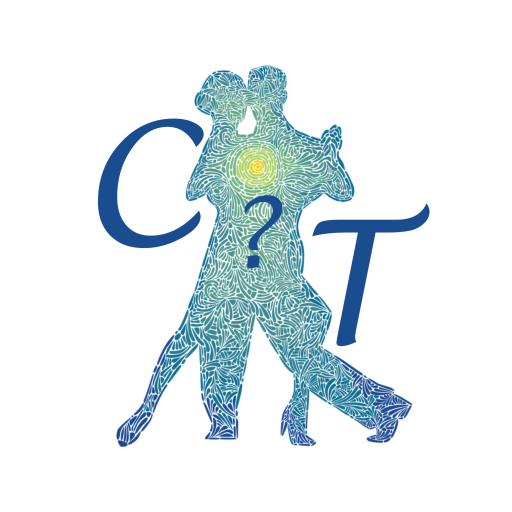Enrosques Unlocked: A Simple Shift That Changes Everything
Podcast and transcription.
Struggling to stay balanced in your enrosques? In this episode, we break down the secrets to stability, exploring how a “lazy pivot” and a simple weight check can transform your technique.
Listen to the podcast here or in your favourite podcast app.
Hi, this is Dimitris Bronowski, the curious tanguero. My goal is to bring more people to tango and more tango to people. I hope you’ll find this episode useful and that you’ll share it with your friends.
Today we’ll discuss enrosques.
Ohhh the beauty.
Ohhh the elegance of this enrosque.
You look like you are flying above the floor.
Look at those feet!
Oh oh, something is wrong.
You are tilting, you are tilting, you are TILTIIIING!!!
OK, she held you straight.
At least the people watching didn’t notice (or did they?)
Kind of embarrassing though.
You smile at her.
You make a decision.
No more enrosques in this tanda.
Let’s not fuck this up again.
Let’s stick to giving her some planeos to do.
I’ve been there many times.
I still get to enjoy the occasional embarrassment.
But I learned a few tricks to preserve my balance and stabilise myself.
The first came from a transfer of knowledge.
If you are not familiar with the concept, it is simply the practice of transferring knowledge, experience, and neuromuscular connections from one movement to the other.
You take something your body already knows, and transfer that understanding to a movement you are still improving.
Here it is:
In a normal ocho, you bring the feet together at the end of the pivot.
You have practiced that thousands of times.
In the enrosque you are doing the same.
The cross happens at the end of the pivot.
Of course you can experiment to do the cross earlier, but…
If you choose to do the cross at the end (aka bringing your feet together), then what your body has practised doing thousands of times after a pivot can be passed to the enrosque.
You choose to do an enrosque as similar as possible to the pivot, so that your body’s wisdom, mechanics, stabilisation muscles etc. become available in a natural way that you don’t have to think of.
On the free newsletter I sent out the ‘What’s an enrosque?’ email.
If you haven’t received it yet, feel free to text me and I’ll send it to you.
What I mentioned there is that an enrosque is a lazy pivot.
The word lazy gives a hint related to timing.
Keep that in mind while we explore the timing of the enrosque:
First take a forward left step and dissociate to the left (turn your chest to the left).
Then, begin to pivot to the left.
Progressively the back leg comes closer together.
Keep in mind that this is not a specific moment, but a process.
The collection process starts at the beginning of the pivot and ends at the end of the pivot.
If you forget to be lazy and you collect it earlier it might make you lose your balance.
A correction tip:
If your axis is too forward you might end up with your weight too much on the front.
When you feel this imbalance, it is normal to try to correct it by stepping on the back leg.
Here is you cue:
You need to be able to slightly lift the heel of the front leg.
If not, repeat the movement with your axis a bit more to the back.
See what happens.
Find where your axis creates a more stable enrosque, and don’t forget to be lazy about it.
What you just did was to understand if your initial axis position and weight distribution is correct, based on what happens to you at the end of the movement (can you lift the heel of the front leg?).
There is one more way to identify the correct initial position (Continues below).
There is one more way to identify the correct initial position:
Stand with your legs together.
Push up so that you are on your toes.
The neutral position you are looking for is the one where when you push up, your body doesn’t need to move forward.
If you enjoyed what you learned in this episode, don’t keep it to yourself. The best thing you can do is to share it with your friends. That’s what social media and messaging apps are for. You’ll be helping them and me.
The second best thing you can do is to visit thecurioustanguero.com/argentinetango There you’ll find a list of free and paid resources to help you improve and enjoy your tango. I am updating that webpage often with new stuff so make sure to re-visit it every once in a while. thecurioustanguero.com/argentinetango
